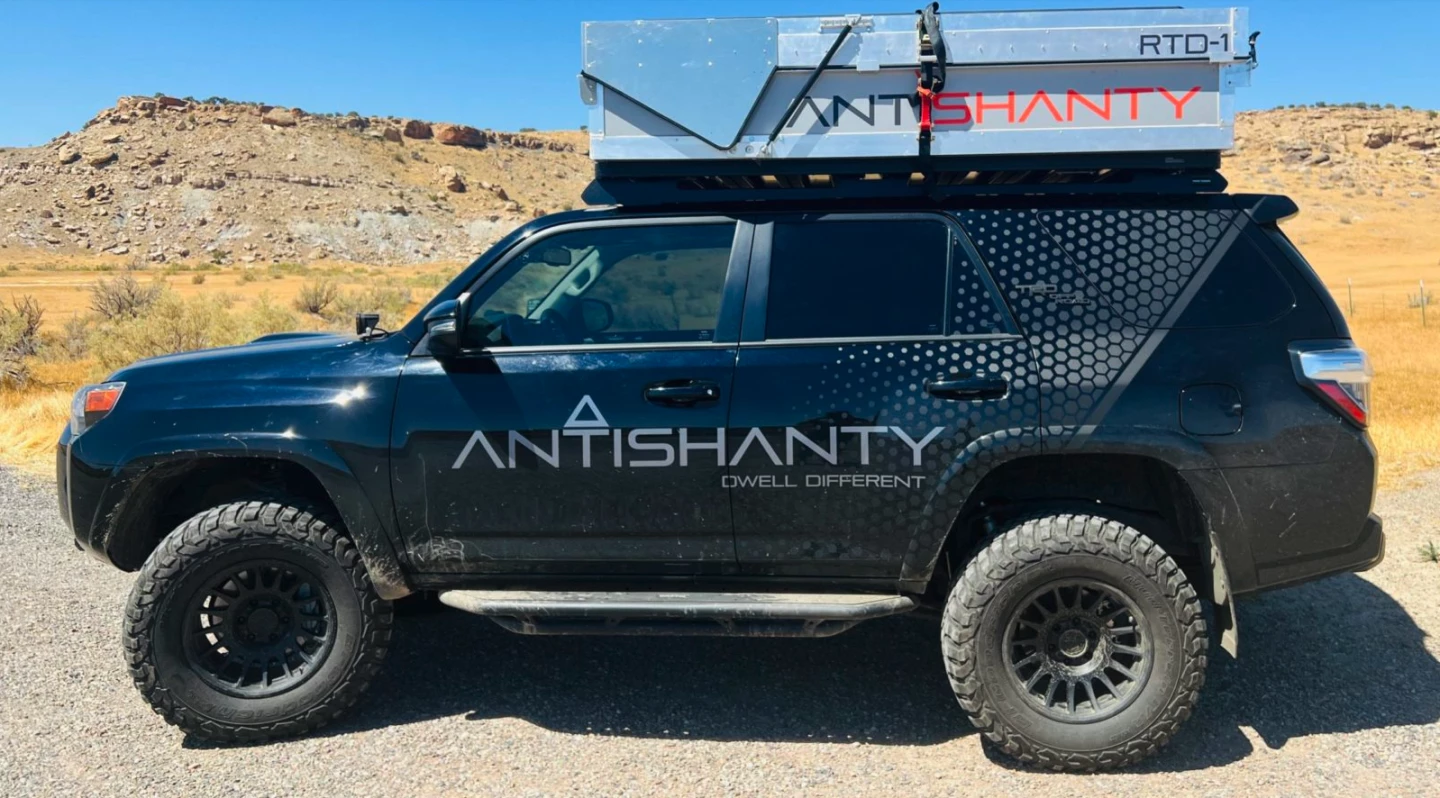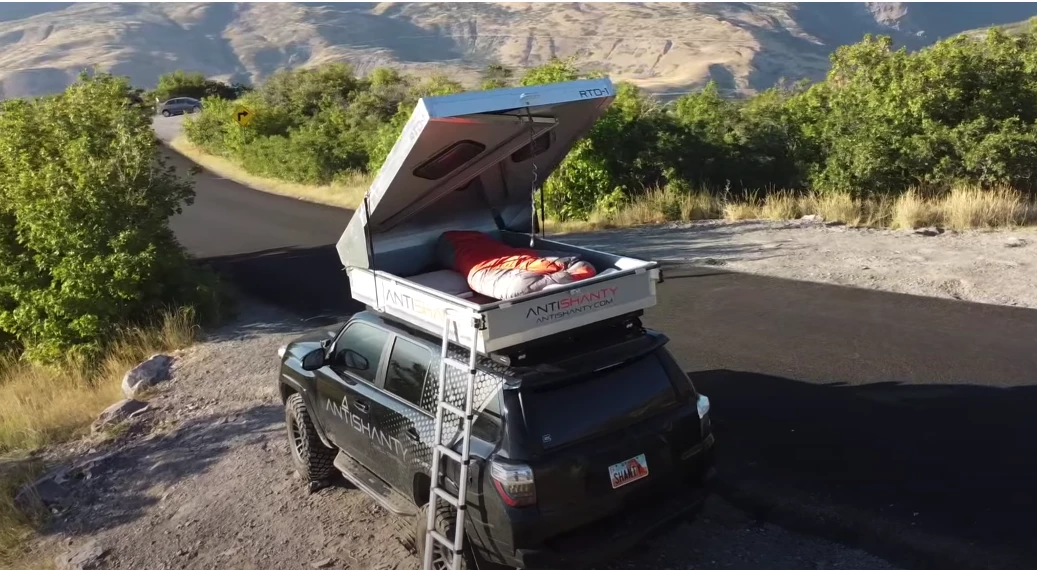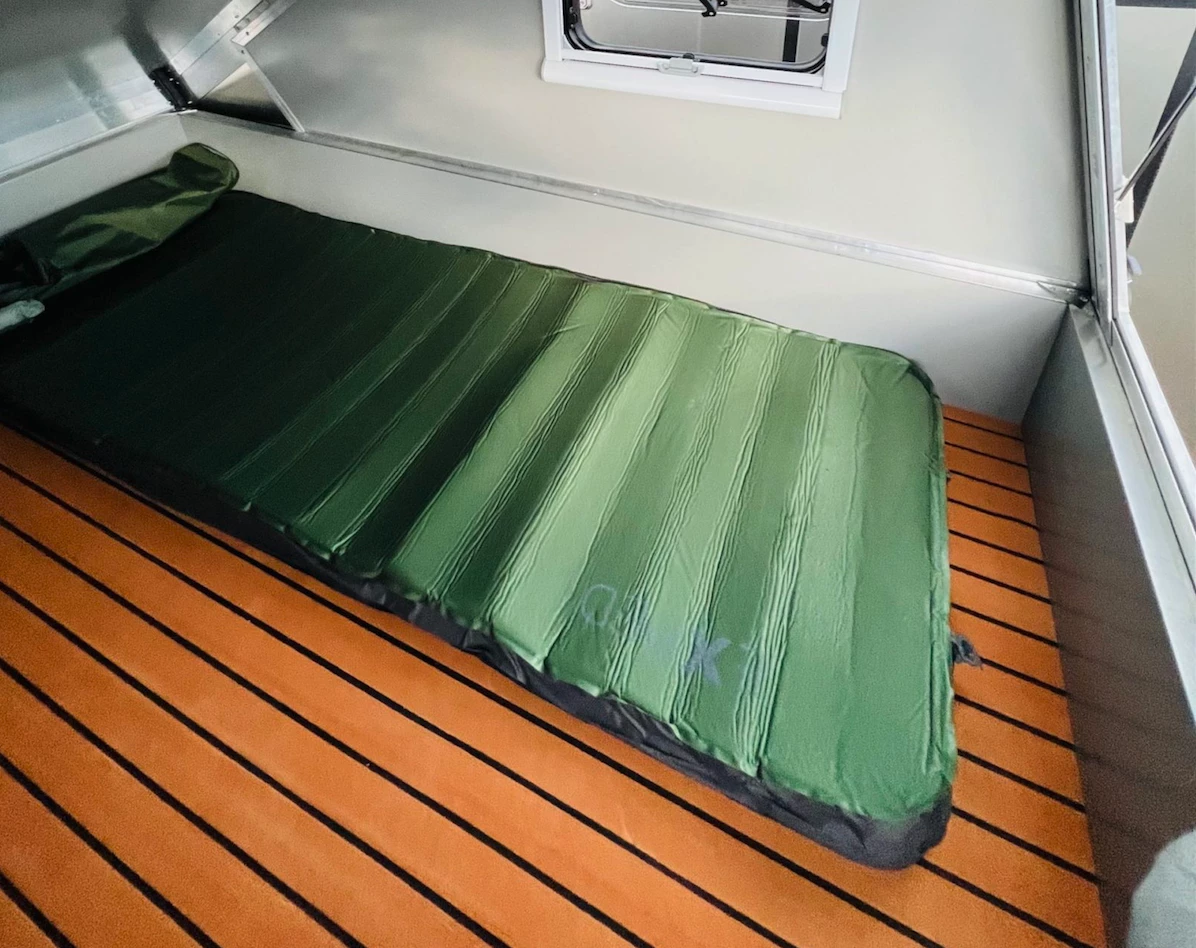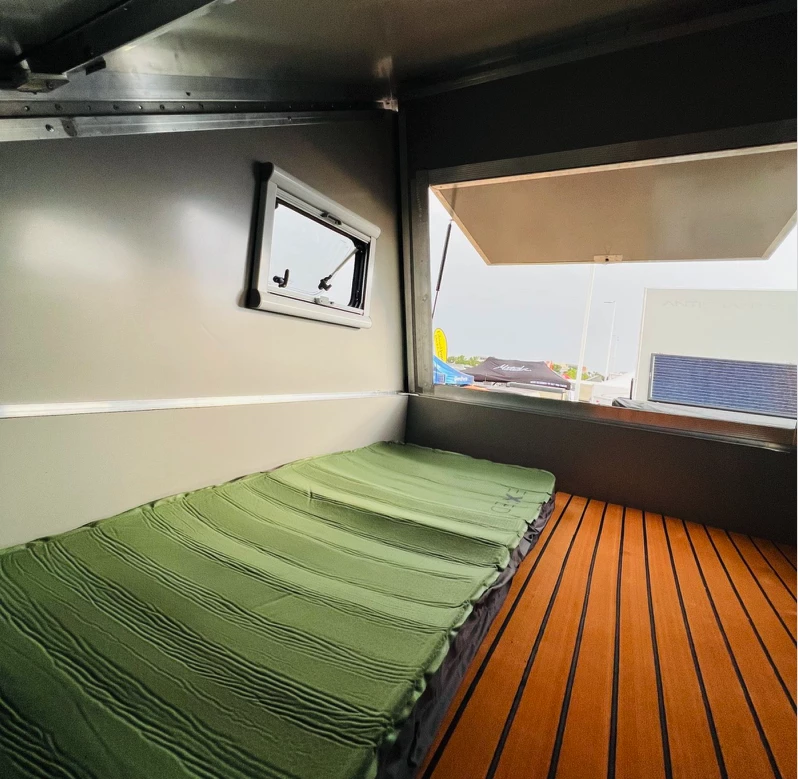Over the past decade or so, the term "RTT," short for rooftop tent, has pushed its way into the everyday vernacular of all kinds of outdoorsy folks. AntiShanty looks to make the related "RTD," rooftop dwelling, an official entry in that same dictionary. With solid aluminum walls in place of fabric, the new product isn't really a tent. And with the ability to carry nearly 800 liters of gear to camp before immediately transforming into an SUV-top backcountry bungalow, it's something very different from anything out there.
Still a prototype under development (and looking the part), the RTD combines two rare products into one. It's one of the few rooftop tents that doubles as a cargo box and one of only two hard-wall RTTs we've ever seen. The other hard-wall rooftop design is the egregiously expensive Redtail RTC (now Skyloft), giving AntiShanty some serious pricing leeway with which to work while still being the most affordable in the category.
If you're wondering why the RTD looks absolutely giant atop the Toyota 4Runner upon which it's mounted, it's because it relies on its extra size for its dual-purpose design. Other rooftop tents that double as cargo boxes perform only one of those functions at a time, requiring that the owner remove the interior tent fabric to free cargo space. The RTD, on the other hand, can carry cargo to camp and then set up as a rooftop shelter in roughly a minute, seamlessly performing both functions on the same trip. It also locks, securing valuable cargo like surfboards or snowboards.

While many rooftop tents are designed to carry sleeping bags and pillows closed, the boxy RTD offers close to 800 liters of storage capacity, more than an XXL-sized Thule Motion XT roof box ... or any other large rooftop cargo box we found for comparison, even those that double as boats. We verified with AntiShanty that the listed 28-cu ft capacity is indeed free space that doesn't include space taken up by the folded tent components — beating out the largest cargo boxes was one of the company's objectives in developing the RTD.

The downside of the voluminous RTD design at this point is that, unlike a carefully streamlined Thule or Yakima box, the front of the RTD is an absolute wall that adds wind resistance on top of the vehicle. It seems to us AntiShanty would be better off adding a bit of streamlining to the front, and perhaps lowering the height, even if it means a little less cargo capacity.
As far as the tent hardware, AntiShanty borrows from its original folding-wall playbook in guiding the installation of one rectangular and two triangular walls that drop down after the roof is popped open and secure to the tub floor to create an all-aluminum wedge shelter with hard sides. Unlike the multi-piece folding walls on hard-sided pop-up truck campers like the Hiatus or Lagom, AntiShanty's are simpler single-panel walls.

AntiShanty applies aircraft-grade aluminum construction to the RTD, using a laser-cut exo/endo frame to support the insulated aluminum panels. It's designed it as a four-season tent meant to be comfortable in everything from summer swelter to winter deep-freeze.
While all that aluminum helps keep the RTD from growing too heavy, the prototype's estimated 300-lb (136-kg) weight is still double (or even more) what you might expect from other rooftop tents. Add in the weight of any cargo and, later, the people sleeping in it, and you can quickly surpass the dynamic and/or static load capacity of factory roof rails or aftermarket crossbars. In fact, it even surpasses the ratings of some full-length platform racks Such a heavy load will also require more of an effort to mount and remove from the vehicle.

AntiShanty tells us that it's actively trying to shave weight and get the number down before production, but it sounds like buyers will ultimately need a particularly beefy platform rack like the Eezi-Awn K9 (or maybe the world's strongest pickup topper) to carry the RTD. And they'll want to figure out what they plan to load inside the RTD ahead of time and compare closely to the rack's weight capacities to be sure it'll work.
AntiShanty is also planning the non-cargo RTD Slimline as a lighter, slimmer dedicated rooftop tent. That model is merely a rendering at this point, without size or weight estimates, but it sounds like it could be a good way of enjoying the hard-sided benefits of the RTD with less of a weight and bulk penalty.

We love the idea of an RTT that can actively work as a cargo box while still transforming into a tent, but we're still not sure if the RTD shows that it can be done effectively or provides more evidence to the contrary. We hope AntiShanty smoothens out the rough (vertical) edges and successfully cuts weight on the production model to pull the needle toward the former.
At US$10,000, the RTD is double or triple the price of other hardshell roof tents on the market but only about half the price of the Redtail RTC, the only other hard-wall RTT to which we can compare. At $9,500, the RTD Slimline really doesn't save buyers that much money at checkout so will really lean on its lighter, sleeker design as the selling point. RTD deliveries are planned to begin by Q2 2023, and eager buyers can put down $1,000 now to reserve their build spot.
The video clip provides a closer look at the RTD and its operation.
Source: AntiShanty










